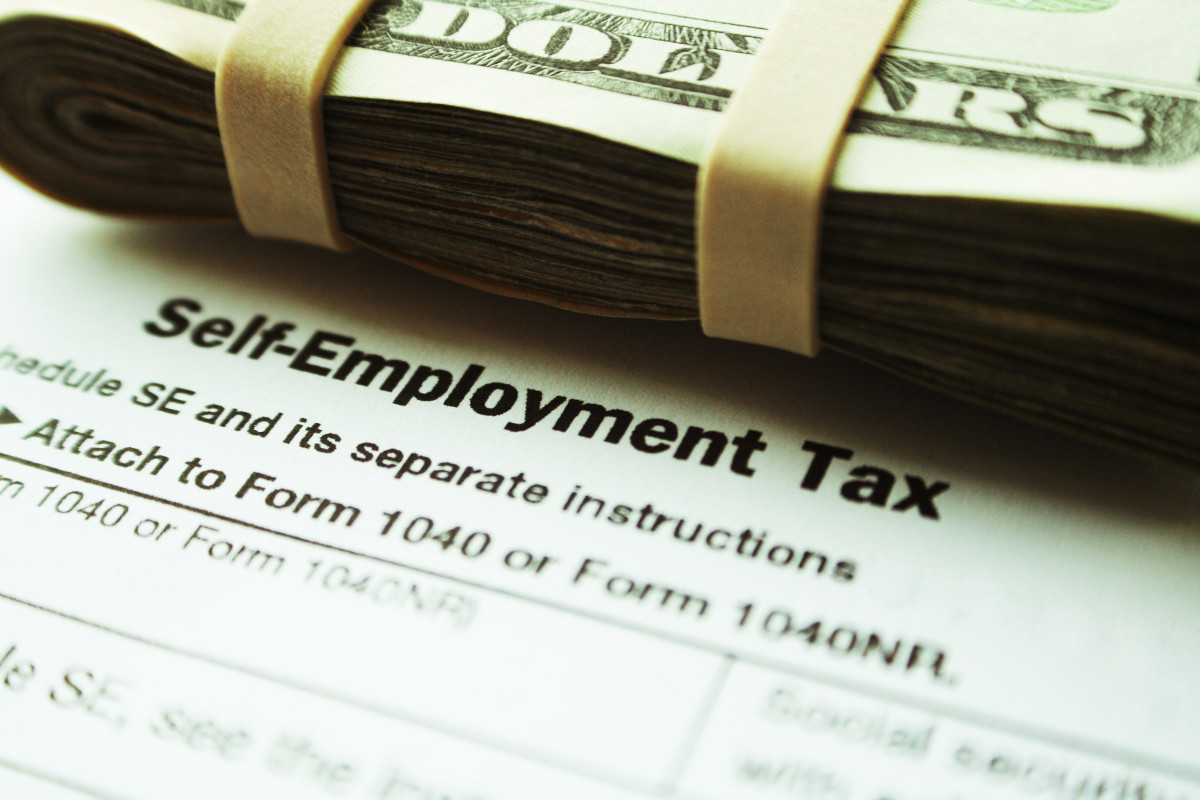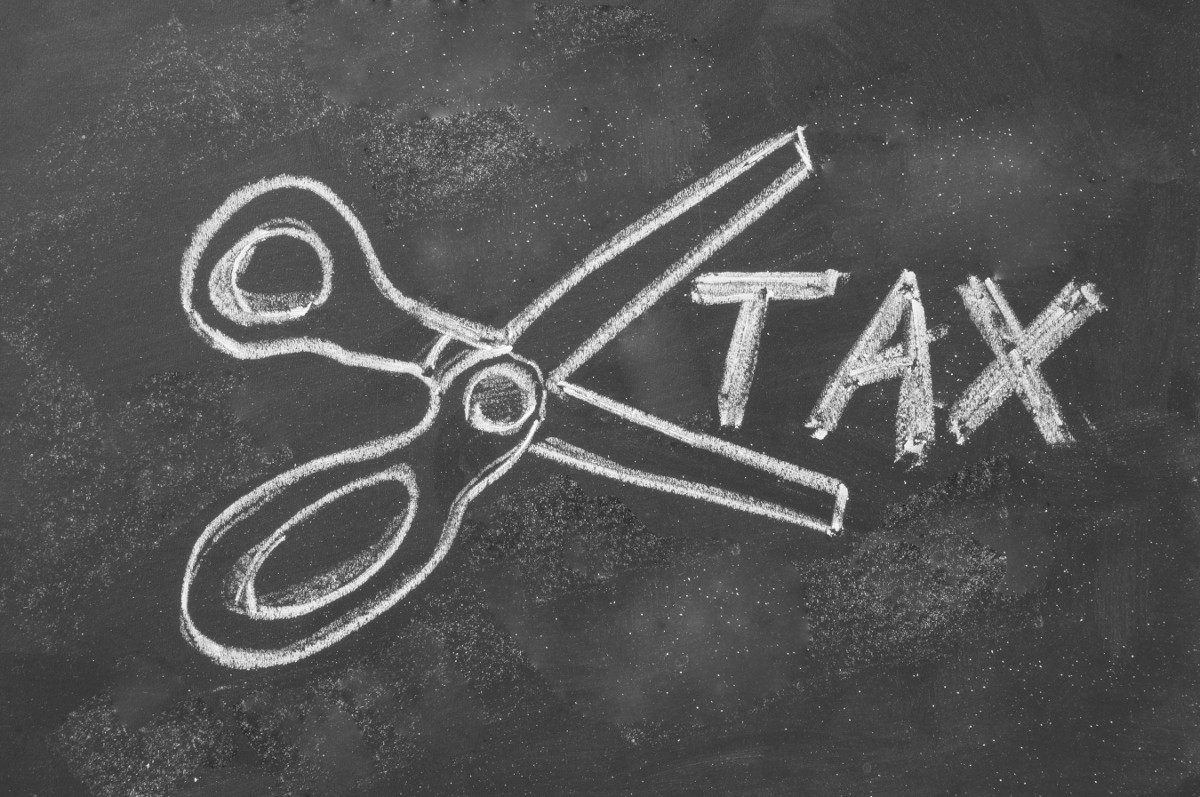How to File Self-Employment Tax and What are the Rates for 2020?
Time flies by so fast these days. Tax season will soon be upon us. For W-2 employees, that’s not really a problem. Their employers already take care of calculations and deductions on their behalf. There’s really no need for them to keep track of what they owe the government in terms of taxes. Unfortunately, the same cannot be said for the self-employed.
Their taxes are not automatically deducted. They are responsible for making sure that they have enough money set aside to cover their tax obligations. What are those? When you're self-employed, you pay both the regular income taxes and self-employment taxes. More on that later. In short, if you are a self-employed individual, you need to understand how to save, file, and pay your taxes.
Who is a self-employed individual?

Before we start calculating the self-employment tax rate and all that, we should first clearly define who counts as being “self-employed.” How does the government categorize self-employed individuals?
Self-employed individuals are those who are not classified as employees; they do not earn a consistent wage paid by a specific employer. According to the IRS, you are self-employed if you are an individual who owns an unincorporated business and earns a living working for himself. This definition covers freelancers, independent contractors, sole proprietors, and partners of a multiple-owner LLC.
Let’s break that down even more.
A freelancer is a self-employed individual who provides his services to multiple organizations. This individual can work on as many projects as his schedule allows. He sets his own rates and chooses where he can work. Some examples of a freelancer include graphic designers, writers, and SEO specialists.
An independent contractor is somewhat similar. This individual can also work with multiple clients as his schedule allows. However, he will usually tackle projects with a large scope and longer time frames. He will also often work with longer-term clients. Unlike a freelancer, an independent contractor will usually work at the client's office or his own workspace. And his schedule might be more similar to a regular employee (i.e., 9 to 5). Examples of independent contractors include doctors, lawyers, and dentists.
Take note that the definitions do vary among different organizations. Some even use the terms interchangeably. But as long as you have net earnings of at least $400 from your projects, you are categorized as a self-employed individual for tax purposes. Sole proprietors are defined as individuals who are the sole owners of their business. In some ways, a freelancer and an independent contractor can be considered as sole proprietors. They are carrying on a trade or business by themselves and work directly with their clients.
A partner in a multiple-owner LLC is someone who shares control of the limited liability corporation with other people. If you are a managing member of the LLC, then you are subject to self-employment taxes.
What Is the Self-Employment Tax?

When you are self-employed, the burden of paying Social Security and Medicare taxes falls on your shoulders. What does this mean? The self-employment tax rate is divided into two portions – the employer and the employee. Half of the Social Security tax will be paid by the employer while the other half will be paid by the employee. For example, in 2019, the Social Security tax rate was 15.3%. Out of that, 12.4% is paid to Social Security tax for the first $132,900 of your net earnings. That means the employer's portion is 6.2% of the first $132,900 of net income. The employee's portion is also 6.2%. The same thing applies when it comes to Medicare tax. Half of the tax will be paid by the employee while the other half is paid by the employer. The only difference is that there is no cap or limit on the net income that can be subjected to the Medicare tax. Because you have no employer, you will pay for both the employer and the employee. This also means that the taxes you pay are significantly higher than that of a regularly employed individual.
Note: Because the self-employment tax is based on the profits of the business, if you don’t have any profits for the year, then you don’t need to pay self-employment taxes.
Self-Employment Tax Deductions

Yes, it does seem unfortunate that you end up paying a lot in taxes compared to the regular employee. But there's a silver lining that you should know about: self-employment tax deductions. There are a lot of areas where you can find write-offs. Let's take a look at some of the most common ones:
Home office: if you have a dedicated space in your home (it doesn't even have to be a room) that you use exclusively and regularly for your business (like a desk in your living room or bedroom), you can deduct a percentage of your home expenses into a business write-off depending on the amount of space that your "office" takes up. For example, if 20% of your house is used as an office space, then you can deduct 20% of your homeowner's association fees, bills for utilities, homeowners insurance, and even general repairs and maintenance as well as mortgage payments and property taxes.
Vehicle expenses: using one of the most common tax deductions for the self-employed, you can deduct actual car expenses such as registration, insurance, gas, repairs, maintenance, parking, toll fees, and even depreciation. You may be able to even deduct the cost of your vehicle up to $25,000. Or, you can opt to use the standard mileage rate provided by the IRS. With this method, you will need to keep a log of all business miles and then multiplying it with the mileage rate.
Internet and Phone Bills: even if you don't avail of the home office deduction, that doesn't mean you can't deduct other home expenses such as your phone, fax, and internet bills. Take note that you cannot deduct expenses that are not related to your business. Therefore, you need to make sure that these services are also utilized by your business. For example, if you use the internet in your home to conduct business, then a portion of that expense can be deducted from your taxes. The same applies to your phone bill. However, you cannot deduct the entire amount if the phone or the internet is also for personal use.
Health Insurance Premiums: since you are self-employed, chances are you pay your health insurance premiums yourself. This means that you can use these expenses (including dental and other qualified long-term care insurance premiums) as a business write-off. You can even include the health insurance premiums that you pay for your spouse and kids.
Meals: when you entertain a client or travel for business, the meals you spend on can be viewed as a tax-deductible expense. If you keep your meal receipts, you can deduct 50% of the cost. If you don't keep receipts, you can deduct 50% off the standard meal allowance. This is provided that you have records that prove that it was business-related, such as the time, place, and business purpose of the travel.
Travel: if you incurred expenses on business travel, you could deduct these costs from your taxes. These costs include transportation, lodging, and meals. Except for meals, these expenses are 100% deductible if the trip is solely for the purpose of conducting business. If your trip is a combination of business and pleasure, you can only deduct portions of your expenses that are related to your business. Take note that there are specific conditions before a trip can be considered business travel. It should be a trip to a place that is outside the city where you are located and must last longer than a regular workday. This means that going on that trip will require you to rest or sleep outside of your area. Moreover, you will need to provide a specific business purpose to your travel as well as actually perform a business activity while on your trip. Accurate records and actual receipts will need to be provided for this deductible.
Interest: if you avail of a business loan, the interest from that loan is considered tax-deductible. If, for example, you got one or more personal loans online, you can only deduct the interest from this loan if you used the entire loan amount or a portion of it for our business. Here’s an example: Individuals who used to serve can avail of personal loans for veterans to help them transition to civilian life. This includes starting a business. If your loan is used in part to cover living expenses while a portion will be used to fund a new business, then only the interest from the "business" portion can be deducted. The rest is considered non-deductible. The same thing applies to credit card interest. If some of your purchases on the card are for business purposes, the interest for that portion can be deducted.
Startup costs: the IRS also allows self-employed individuals to deduct up to $5,000 as startup costs. These costs include market research, advertising, legal fees, accountant fees, and travel that is related to starting your business (i.e., checking out potential store locations).
Qualified Business Income Deduction: the QBI deduction allows self-employed individuals and small business owners to deduct up to 20% of qualified business income on their taxes. This deduction is only for those who report their business income on their personal tax return, also known as the "pass-through" income. You are eligible for this if you are a sole proprietor, part of a partnership, an S corporation, or an LLC. There are limits to this deduction based on your income level and the type of business you have.
What Is the 2020 Self-Employment Tax Rate?
This 2020, the self-employment tax rate remains at 15.3%. For Social Security tax, the rate is 12.4% on the first $137,700 of net income. For Medicare tax, the rate is 2.9% on all net income. A 0.9% additional Medicare tax may also be applied to your net income from self-employment if it exceeds $200,000 for single filers or $250,000 for joint filers.
How to Calculate Your Self-Employment Tax
The first thing you need to do in order to calculate your taxes is to determine what your tax rate is and if there are city taxes that you need to take into account. Some businesses can be required to pay sales tax by their state; this varies between states, so it's best to check with your state government. As a business owner, you will be liable to pay this even if you did not collect it from your customers. Use tax may also be required. This type of tax is applied to all your supplies and other items that you purchased for your business but did not pay a sales tax on when you should have. You may also have to pay estimated federal and state taxes. Plus, if you have employees, the IRS will require you to pay payroll taxes on their salaries.
As for calculating your self-employment tax, you will need to figure out your business net income. To do this, you will need to get your net profit (or loss), which means subtracting business expenses from the income earned by your business. Anything left over is considered your net profit. If your expenses are more than what you earned, then the resulting number is considered a net loss.
Once you have your net profit, as we've already mentioned, the self-employment tax rate for 2020 is 15.3% which is comprised of 12.4% Social Security tax and 2.9% Medicare tax. In general, 92.35% of your net income from self-employment will be subject to self-employment tax. Once you have the amount that is subject to tax, you can multiply it by the 15.3% tax rate. Take note that the 12.4% Social Security tax will only be applicable to the first $137,700 of net earnings.
If you only had a little bit of income or had a net loss for this year, you can look at the IRS Schedule SE to get help calculating your tax due.
How to File Your Taxes
If you expect to owe $1,000 or more in taxes for the year after deducting your withholding and credits, then you will need to make estimated quarterly payments to the IRS. These quarterly payments include income tax and self-employment tax. To file quarterly payments, you will need to use Form 1040-ES (Estimated Tax for Individuals) and submit your payments using the blank vouchers included. You can also opt to make your payment online through the Electronic Federal Tax Payment System (EFTPS). The quarterly payment periods and their due dates are as follows:
|
Payment Period |
Due Date |
|
January 1 – March 31 |
April 18 |
|
April 1 – May 31 |
June 15 |
|
June 1 – August 31 |
September 15 |
|
September 1 – December 31 |
January 16 (of the following year) |
If you file an annual return, you will need to use Schedule C to report your income or loss from the business. To report your self-employment taxes, you will also need to file the Schedule SE (Form 1040), Self-Employment Tax.


